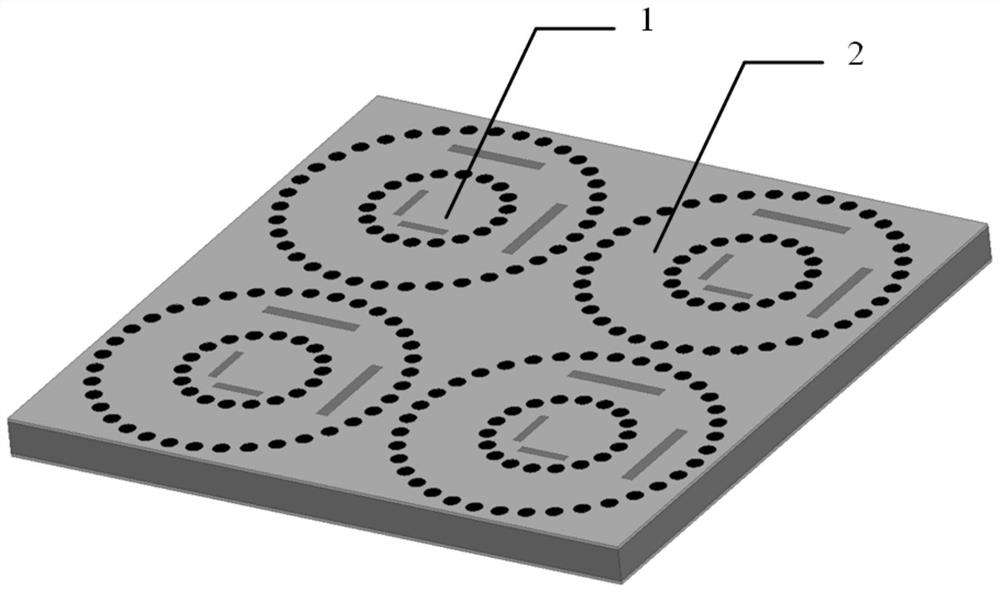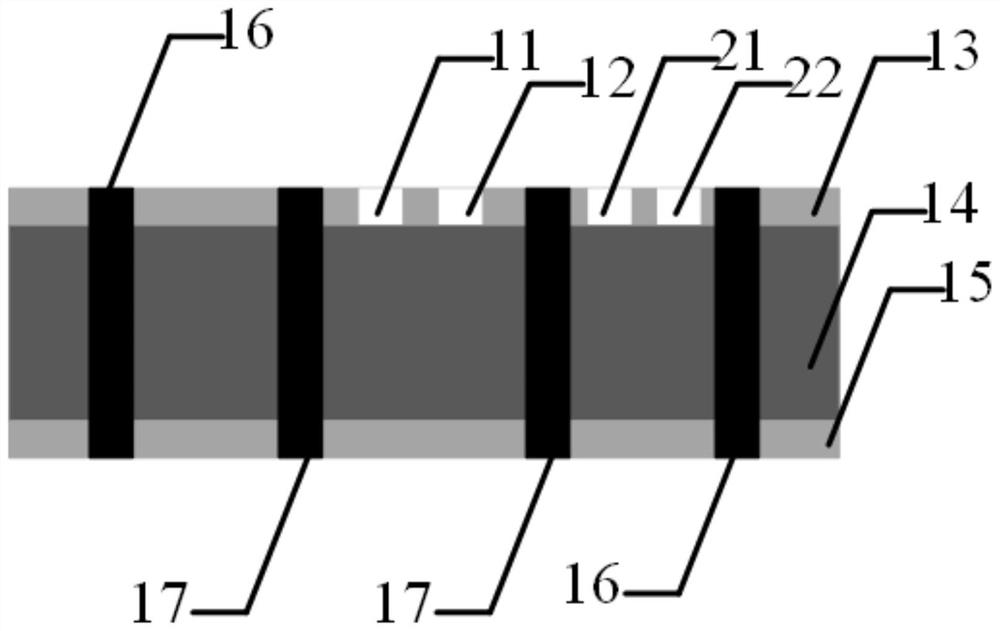A cavity-backed dual-frequency common-aperture antenna based on structure multiplexing
A common-aperture and back-cavity technology is applied to the structural form of radiating elements, antenna arrays and antennas that are powered independently, and can solve the problems of low antenna aperture utilization efficiency and insufficient isolation between antennas, so as to improve aperture utilization efficiency and solve The effect of insufficient channel isolation and improved isolation
- Summary
- Abstract
- Description
- Claims
- Application Information
AI Technical Summary
Problems solved by technology
Method used
Image
Examples
Embodiment Construction
[0023] The present invention will be further elaborated below in conjunction with the accompanying drawings and embodiments.
[0024] This embodiment provides a cavity-backed dual-frequency co-aperture array antenna based on structure multiplexing, and its 2×2 radiation structure is as follows figure 1 As shown, wherein, each antenna unit includes: SIW cavity-backed radiation slot antenna 1 and coaxial cavity-backed radiation slot antenna 2; the operating frequency ratio of the antenna in this embodiment is less than 8, and the high and low frequency antennas utilize structural The specificity is integrated without adding additional aperture area, and achieves high isolation under high aperture utilization efficiency.
[0025] In this embodiment, the structure of the antenna unit is as follows figure 2 As shown, it includes: the lower metal copper clad layer 15, the dielectric layer 14 and the upper metal copper clad layer 13 stacked in sequence from bottom to top; the upper...
PUM
 Login to View More
Login to View More Abstract
Description
Claims
Application Information
 Login to View More
Login to View More - R&D
- Intellectual Property
- Life Sciences
- Materials
- Tech Scout
- Unparalleled Data Quality
- Higher Quality Content
- 60% Fewer Hallucinations
Browse by: Latest US Patents, China's latest patents, Technical Efficacy Thesaurus, Application Domain, Technology Topic, Popular Technical Reports.
© 2025 PatSnap. All rights reserved.Legal|Privacy policy|Modern Slavery Act Transparency Statement|Sitemap|About US| Contact US: help@patsnap.com



